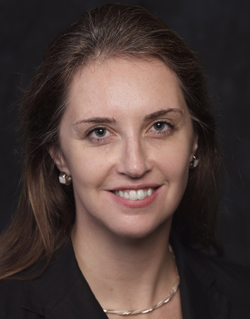
Representing experts across various fields, University of Houston sources have expertise in an array of topics related to storms – before, during and after.
Carla Sharp, an associate professor and director of the Developmental Psychopathology Lab in clinical psychology at the University of Houston (UH), became interested in the way people think, how they organize thoughts, execute a decision, then determine whether a decision is good or bad.
Sharp will explore that interest by serving as primary investigator for a new research study titled, “Theory of Mind and Emotion Regulation Difficulties in Adolescents with Borderline Traits,” featured on the cover of the June edition of the Journal of the American Academy of Child & Adolescent Psychiatry.

The research study covers a two-year period and included 111 adolescent inpatients between the ages of 12 to 17. This is the first time a research study provides empirical evidence to support the relationship between borderline personality disorder (BPD) traits and “hypermentalizing” in adolescents according to Sharp. Mentalizing is the social intelligence that refers to the ability to infer and attribute thoughts and feelings to understand and predict another person’s behavior. The results of the data can be used for early intervention, treatment and identification of BPD in adolescents to improve strategies for treatment, such as putting the brakes on “hypermentalizing”; and to encourage the BPD patient to stick to the facts. The data also will support further research in this area.
“Why does someone with borderline personality disorder key a car, if doing so will not lead to good consequences? What compels her to make that decision?” Sharp said. “I am trying to understand the development of the disorder and what happens in the brain, and what happens in the minds of these children as they develop to put them on a different trajectory compared to their peers.
“Borderline personality disorder is a condition in which people have long-term patterns of unstable or turbulent emotions about themselves and others. These inner experiences often cause them to take impulsive actions and have chaotic relationships. The criteria for BPD includes: excessive anger, affective instability, a clear pattern of self-harm over two years - burning, cutting, suicide attempts, abandonment fears, relationship problems, significant impulsivity – drinking alcohol, drug abuse, eating, anorexia, overeating and illegal activities.
“Clinicians have been reluctant to diagnose BPD in adolescence because there is the notion that personality is not fully developed in childhood and adolescence. We know that the brain is only fully developed by age 25, so how can we diagnose a personality disorder in someone if they don’t have a fully developed brain yet?” said Sharp. “On the one hand, we are finding in our research that kids do have a stable pattern of interaction with others. Parents will describe their kids to you in terms that remain stable over time.
“Therefore, personality researchers have highlighted the point that teens do not wake up at 19 and have a personality disorder on the first day of their 19th year, so there must be some precursors to the disorders. There’s been a group of people, including myself, advocating that we not necessarily diagnose borderline personality disorder in adolescence, but that we assess for it to make sure that we don’t miss these children.”
The UH research team used an innovative approach to assess the social cognition process with children, through a newly developed tool called the Movie for the Assessment of Cognition (MASC), alongside self-report measures of emotion regulation and psychopathology.
The research subjects were presented with actual movie scenes. They were introduced to the characters in the movie: Sandra, Michael, Betty and Cliff, by showing a photo of each. They were instructed to watch the 15-minute film carefully to understand what the characters are feeling and thinking. They are then asked what the character in the movie might be feeling or thinking, with four options to choose from, forcing a single response prompt for one of the following categories: no mentalizing, less mentalizing, hypermentalizing or accurate mentalization.
The UH research team’s findings from the study found 23 percent of the adolescents in the inpatient setting met the criteria for BPD. The young adults who met criteria for BPD had a higher frequency of these overmentalizing responses. The second part of the finding was the hypermentalizing interacted with emotional regulation. The individuals with BPD misread people’s thoughts, upsetting the adolescent and creating a challenge with emotion regulation that leads to an increase in borderline personality disorder symptoms.
“This research study is groundbreaking in that it’s the first to provide empirical evidence of the link between BPD and mentalizing in adolescents. By identifying precursors and treating BPD early in adolescence, we can use validated treatments to help these children,” Sharp said. “The danger of not recognizing precursors of BPD in adolescents is that it can lead to years of confusion and pain for family members and the individual with misdiagnosis and lack of appropriate treatment. These families often go through years of assessment, and people might think it’s bipolar disorder, depression, conduct disorder or comorbidity.”
They are often relieved when they get
to their mid-‘20s and get to the right treatment facility that can actually
diagnosis them and give a name to the cluster of symptoms they’ve been
experiencing for so long, Sharp said. 
“The next step is to try to do this work while neuroimaging the teen’s brain, so that we can look at the biological correlates of this. Such research could potentially lead to pharmacological intervention in addition to the talk therapy,” she said.
The UH research team included Carla Sharp, Heather Pane, Carolyn Ha and Amanda Venta. Collaborators included Amee Patel, Baylor College of Medicine; Jennifer Sturek, University of Virginia; and Peter Fonagy, University College London. Funding for the research was provided by the Child and Family Program at the Menninger Clinic.
###
About the University of Houston
The University of Houston is a Carnegie-designated Tier One public research university recognized by The Princeton Review as one of the nation’s best colleges for undergraduate education. UH serves the globally competitive Houston and Gulf Coast Region by providing world-class faculty, experiential learning and strategic industry partnerships. Located in the nation’s fourth-largest city, UH serves more than 38,500 students in the most ethnically and culturally diverse region in the country.